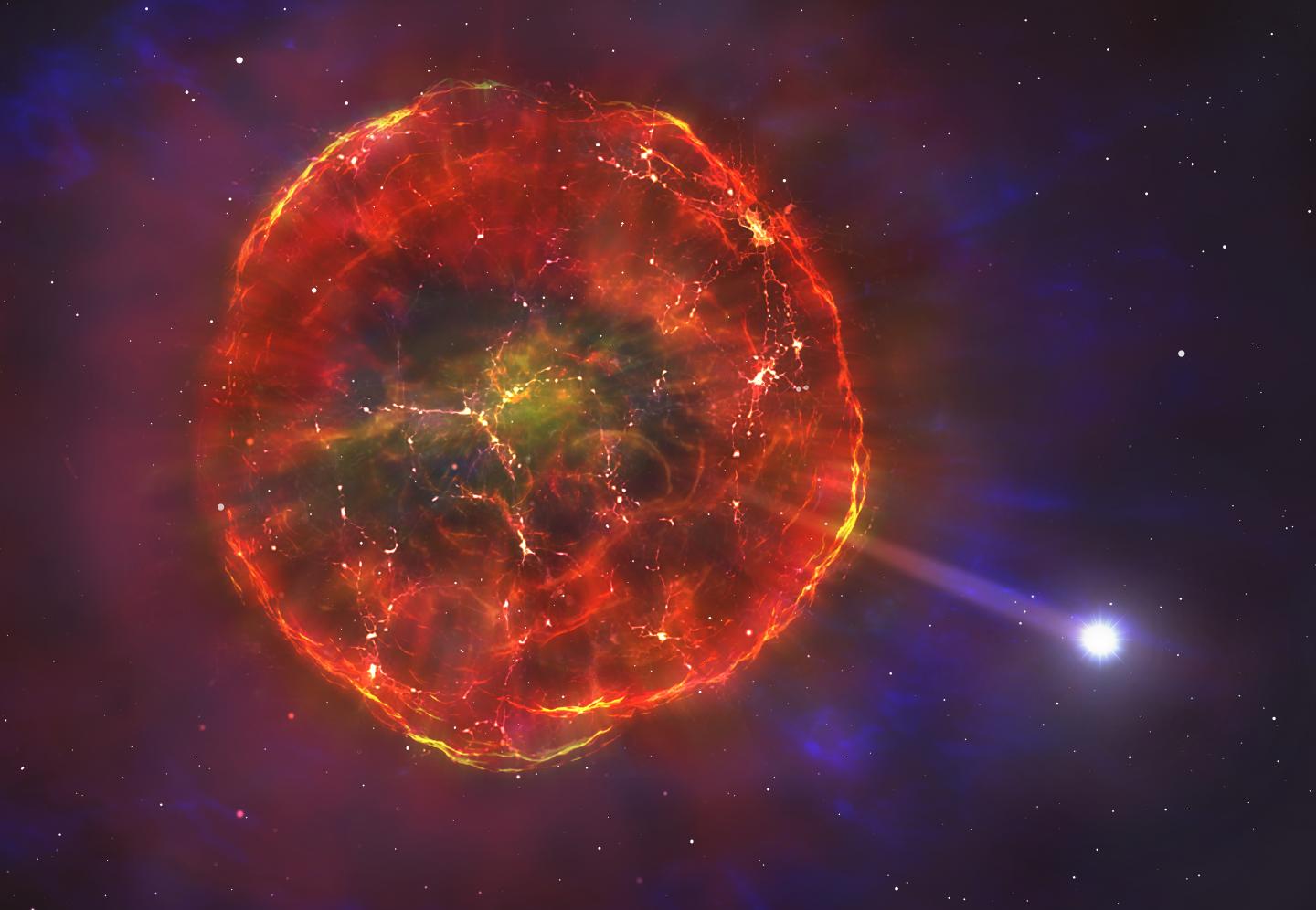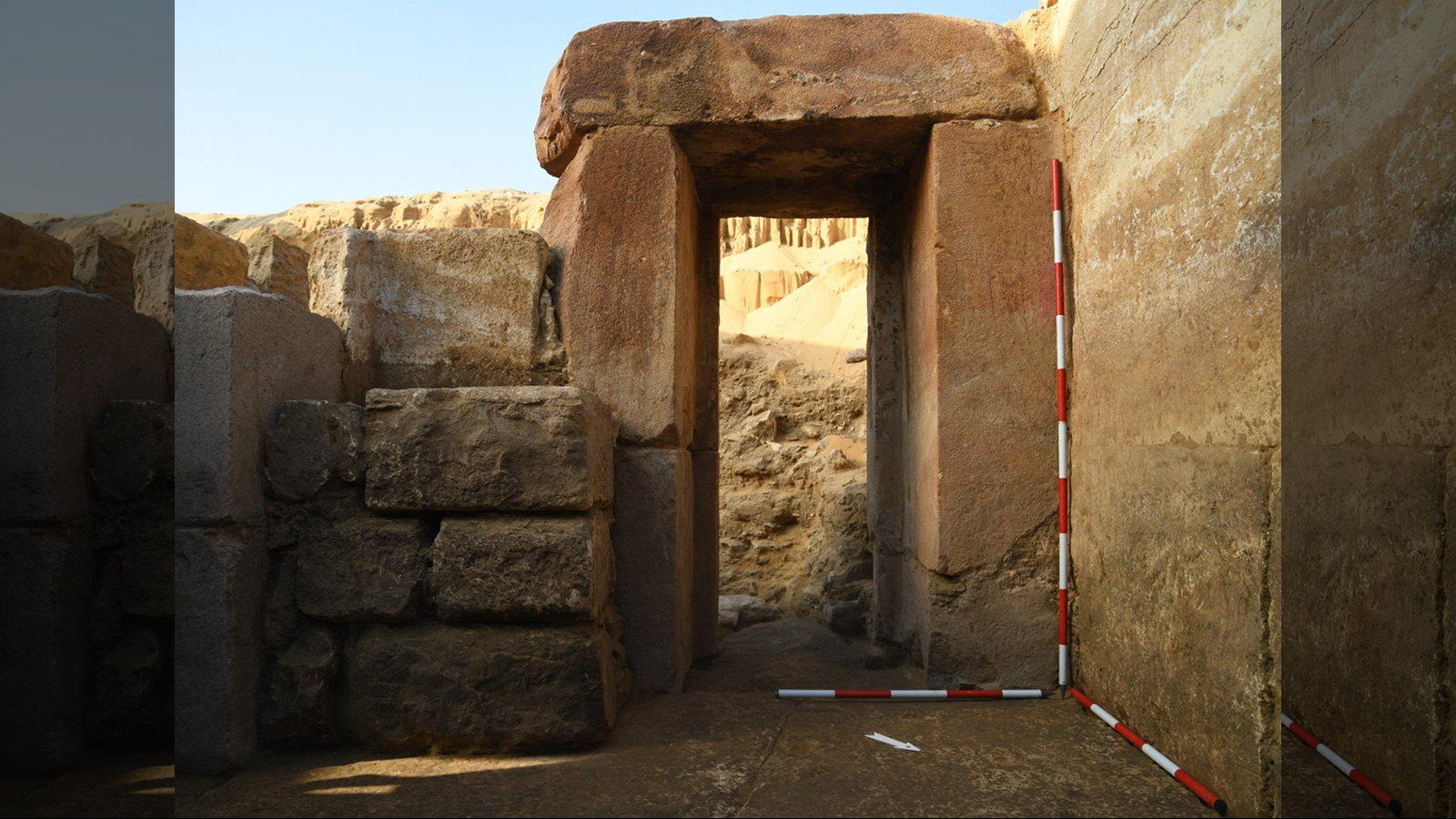A never-before-seen 'partial supernova' sent this star’s corpse skidding across the galaxy
The runaway star is traveling at nearly 600,000 mph and lost most of its mass to a mysterious explosion.

An intimate pair of distant stars had a violent falling-out, sending both careening millions of miles a day toward opposite ends of the universe. Relationships, huh?
In 2015, astronomers discovered one of those stars (named SDSS J1240+6710) cruising across the Milky Way. The star's brightness and composition suggested it was a white dwarf — the decaying, Earth-sized husk of a once-enormous red giant. But something about the runaway star's atmosphere seemed off. Typical white dwarfs have outer atmospheres made almost entirely of hydrogen and helium; this star's atmosphere didn't have any of either element.
Related: 11 fascinating facts about our Milky Way galaxy
This atmospheric anomaly prompted researchers to take a closer look at the star — and the story only got weirder. According to the researchers, who detailed their results July 15 in the journal Monthly Notices of the Royal Astronomical Society, the runaway dwarf's size, speed and composition all point to a thermonuclear supernova explosion in its recent past that sent the star and its former binary partner (most explosion-prone white dwarfs are bound to a larger star) blasting out of orbit.
However, the star's atmosphere still lacks several key elements that define these types of explosions. If a supernova knocked SDSS J1240+6710 into interstellar space, it must be a type of supernova "that we haven't seen before," lead study author Boris Gänsicke, an astrophysicist at the University of Warwick in England, said in a statement.
In their new study, Gänsicke and his colleagues investigated observations of the star from NASA's Hubble Space Telescope and the European Space Agency's Gaia satellite. The Gaia data revealed that SDSS J1240+6710 is cutting across the galaxy at approximately 560,000 mph (900,000 km/h), and has a mass about 40% that of Earth's sun. That's a high speed and a low mass for a typical white dwarf, the researchers wrote, suggesting the star must have lost some of its mass from an enormous explosion.
Certain elements in the dwarf's atmosphere also pointed to a supernova. The star's atmosphere contained plentiful sodium, carbon, oxygen and aluminum — all elements produced during the first phase of a thermonuclear supernova, when the star's blazing energy fuses lighter elements into heavier ones, the team wrote. In the most common types of supernovas, the fusion process usually culminates with the creation of heavy elements like iron, nickel and chromium — but the researchers couldn't detect any of those heavy metals in the odd dwarf's atmosphere.
Get the world’s most fascinating discoveries delivered straight to your inbox.
What does this all mean? It's almost as if SDSS J1240+6710 started to explode in a thermonuclear supernova, then suddenly stopped partway through. The explosion seems to have been strong enough to blow away the star's outer, lighter gas layers and knock the star and its one-time partner out of orbit — however, something stopped the nuclear fusion process before any heavy elements were forged, Gänsicke said.
While this theory explains the star's below-average mass and strange atmospheric composition, a "partial" supernova like this has never been observed in the universe before. It would also be very hard for astronomers to "catch one in the act" of exploding, Gänsicke said, as most supernovas are detected by the radioactive afterglow of their nickel (one of the heavy elements this runaway dwarf lacks). Still, the odd dwarf's existence serves as another reminder that there are plenty of unexplained phenomena swirling around the death cycles of the stars.
"We are now discovering that there are different types of white dwarf that survive supernovae under different conditions… there is clearly a whole zoo out there," Gänsicke said.

Brandon is the space / physics editor at Live Science. With more than 20 years of editorial experience, his writing has appeared in The Washington Post, Reader's Digest, CBS.com, the Richard Dawkins Foundation website and other outlets. He holds a bachelor's degree in creative writing from the University of Arizona, with minors in journalism and media arts. His interests include black holes, asteroids and comets, and the search for extraterrestrial life.


